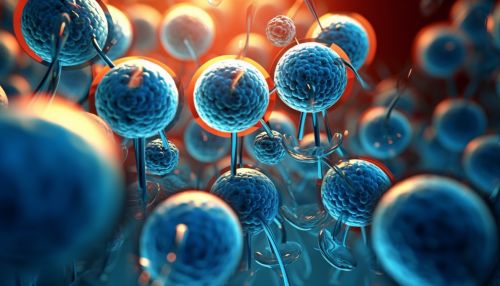Hayflick Limit
Introduction
The Hayflick Limit is a concept in the field of cellular biology that refers to the maximum number of times a normal human cell population will divide before cell division stops. It is named after the American anatomist Leonard Hayflick who discovered this phenomenon in 1961.
Discovery
In the early 1960s, Leonard Hayflick and Paul Moorhead, while working at the Wistar Institute in Philadelphia, discovered that normal human fetal fibroblasts in culture reach a maximum of approximately 50 cell population doublings before the rate of cell division slows, and cells enter a phase of senescence. This was a revolutionary discovery as it contradicted the then prevailing belief of cell immortality, a concept put forward by Alexis Carrel, a Nobel laureate.


Theoretical Basis
The Hayflick Limit is based on the understanding that each time a cell divides, a small portion of the telomeric DNA at the ends of the chromosomes is not replicated. This is known as the end replication problem. As a result, with each cell division, the telomeres shorten. When the telomeres reach a critically short length, the cell enters a state of growth arrest known as replicative senescence. This is the basis of the Hayflick Limit.
Role of Telomeres
Telomeres play a crucial role in the Hayflick Limit. They are repetitive sequences of DNA at the ends of chromosomes that protect the chromosome from degradation. However, due to the end replication problem, telomeres shorten with each cell division. When telomeres become critically short, the cell can no longer divide and becomes senescent or dies. This mechanism prevents the propagation of errors in DNA replication, thereby maintaining genomic stability.
Role of Telomerase
Telomerase is an enzyme that adds DNA sequence repeats to the 3' end of DNA strands in the telomere regions, effectively extending them. It is usually active in germ cells and stem cells, which need to divide continuously. However, in most somatic cells, telomerase is not active, leading to progressive shortening of telomeres with each cell division, and ultimately, the Hayflick Limit. This is thought to be a mechanism to limit the proliferation of potential cancer cells.
Implications in Aging and Disease
The Hayflick Limit has significant implications in the study of aging and disease. The progressive shortening of telomeres and the eventual senescence of cells is thought to contribute to aging and age-related diseases. On the other hand, the activation of telomerase in cancer cells allows them to bypass the Hayflick Limit and divide indefinitely, contributing to their immortality.
Criticisms and Controversies
While the Hayflick Limit is widely accepted, it has also been subject to criticism. Some argue that the limit is not absolute and can be influenced by various factors such as stress, diet, and lifestyle. Others point out that some cells, like cancer cells, can bypass the Hayflick Limit through mechanisms other than telomerase activation.
Conclusion
The Hayflick Limit is a fundamental concept in cellular biology, providing insight into the process of cellular aging and the development of disease. While there is still much to learn about the intricacies of cell division and the exact role of telomeres and telomerase, the Hayflick Limit provides a framework for understanding these complex processes.
